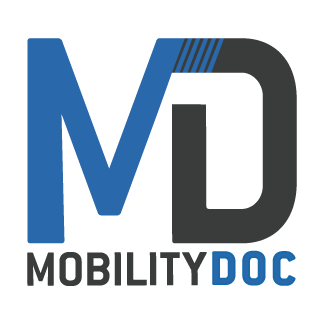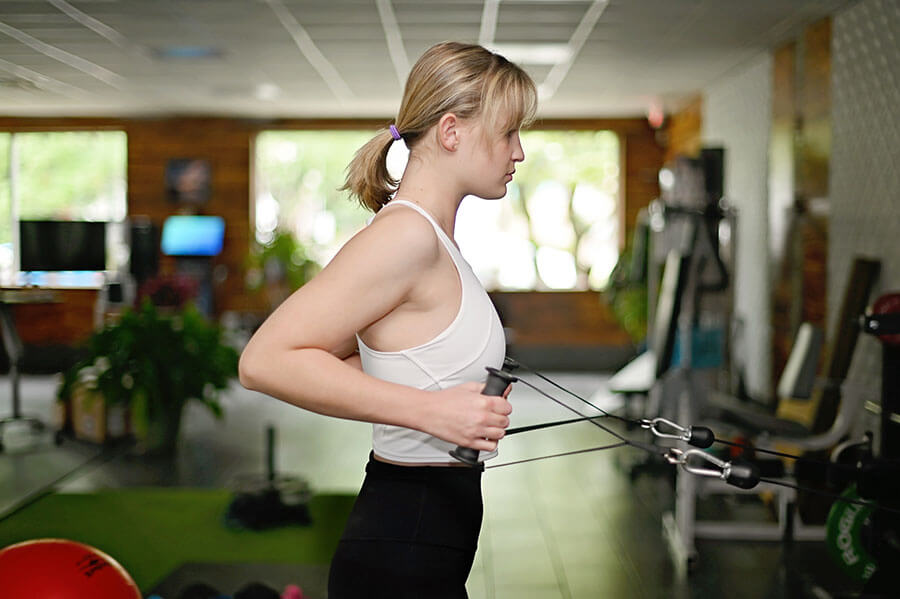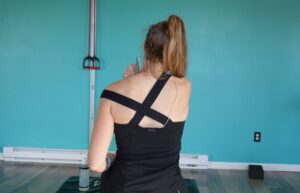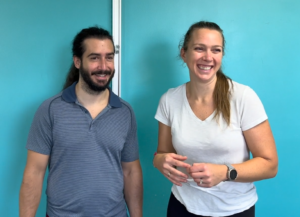Whether you’re an Olympic athlete or behind a desk, everyone can agree they have suffered from some shoulder pain or discomfort in their lives. It can be an injury, tightness, impingement, or maybe you just slept weird. You may even be suffering from limited range of motion right now without even realizing it. So let’s fix it! We are going to do that by; learning how shoulder dysfunction can happen, understanding how the shoulder joint works, and challenging ourselves by taking on a 10 day challenge with shoulder mobility exercises to improve your shoulder function.
How Dysfunction Happens
Almost ⅓ of all shoulder injuries reported are from sports. As active people we are constantly throwing, lifting overhead, pulling, pushing. You name it, we do it. All because the complexity of the shoulder joint allows us to. Have you also considered the idea that our entire lives are in front of us? Not figuratively, literally. Computers, phones, tablets; all of which have us rounding forward. This may seem harmless. What can rounding forward really do? Well, it is closing the space in our shoulder capsule and making our shoulder blades not move well. It is also causing our spine to curve in the wrong direction (but more about that next week). No matter where your shoulder mobility issues come from, what matters is we can fix it.
Shoulder Mechanics 101
The shoulder, or the glenohumeral joint, has the most range of motion of any joint in the body. It is a ball and socket joint (If you don’t know what that means find more information here) where the humerus meets the scapula in what is called the glenoid cavity. If you’re not familiar with the scientific terms, it’s where your shoulder blade invites your upper arm to hang out. To have proper shoulder mobility, there are 4 key parts. We already talked about two, so let’s start there.
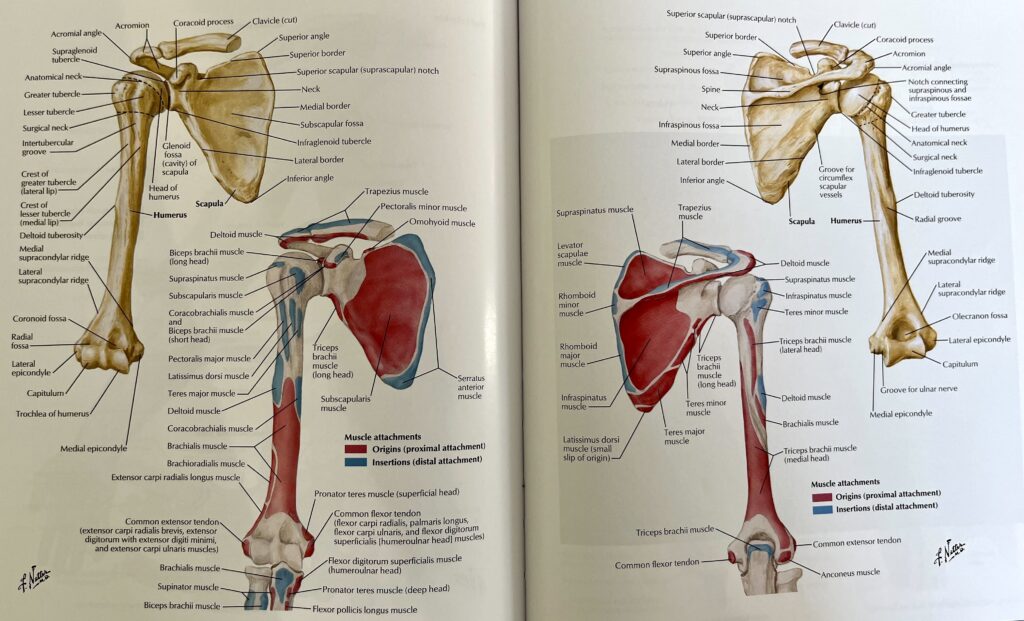
The shoulder blade needs to move along the back of the ribcage. It moves this way to make space allowing the ball of the humerus in. Take a moment with me and let’s try it. Stop what you’re doing and place your arms by your side. Keep your shoulders down and move one of your arms directly out to the side (I’m at my desk so I’m currently doing it with a bent elbow). Do this 3 or 4 times. Focus your attention not on how your arm feels, but how your shoulder blade feels in connection with your back. You should feel it sliding along the back of your ribcage like an upside down windshield wiper.
At the same time, when your arm is lifted, can you picture the ball of the humerus having rolled into the cradle being offered by your shoulder blade? Ideally, when your upper arm lifts and your shoulder blade moves, space is created for the head of the humerus to rest in the cavity. I say ideally because remember how we talked about how bad could rounding forward really be? This is exactly where it comes into play.
Typical Shoulder Issues
Many people suffer from what is called scapular instability, or winging. This is when the shoulder blade starts to not sit flat on the ribcage, but rather angles itself forward. Let’s have another example. Round your shoulders forward as far as you can. Do you feel the bottom of your shoulder blade pulling away from your back? This is a very exaggerated version of winging. As your shoulder blade angles forward it starts rubbing against the muscles and tendons in your upper back. If you feel crunching or hear popping in your back when you move your shoulder blade, that is actually the feeling and sound of a winged scapula. If this happens to you, don’t worry! We’ve got shoulder mobility exercises to fix it.
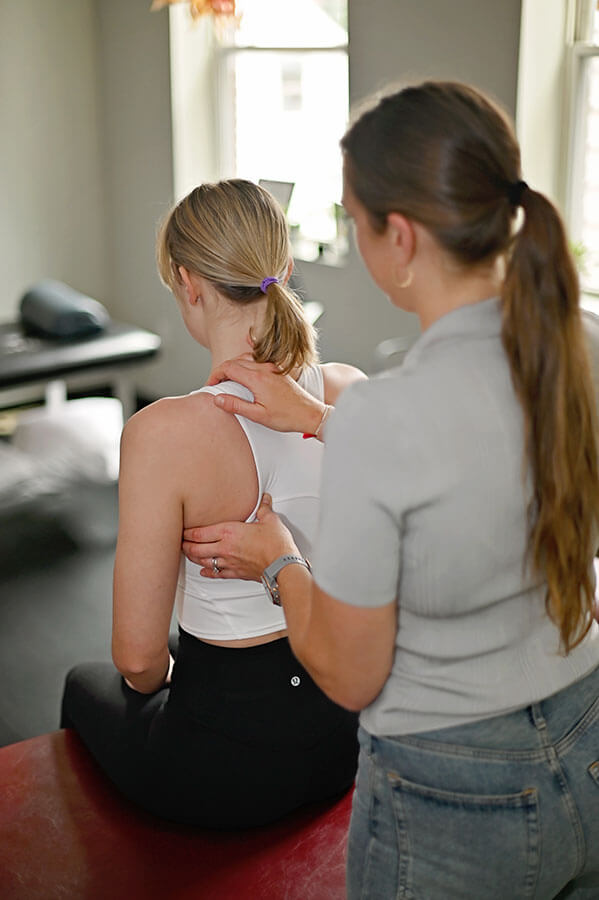
When your upper arm bone slides forward from having rounded shoulders, it is not sitting properly in the cavity. Having forward glide in your upper arm causes impingement and tendinitis issues. Posture is a huge contributor to this, so if you are known to slouch or can’t change your screen time habits, you’re going to want to participate in what’s coming next.
Shoulder Mobility Exercises
So how do we fix it? With the same range of motion test (ROM) from last week and two awesome exercises that are going to teach your shoulder blade how to move properly. The two exercises are called the floor angel and the twisted angel. All you need for both is some space where you can stretch out on the floor. We recommend using a yoga mat, but it’s not a must.
Both the floor angel and the twisted angel work on having your shoulder blade move properly on your ribs while keeping the ball of your upper arm bone in its socket. The biggest difficulty people have with these exercises are not allowing your trapezius muscles, or your traps, to take over. You want to be sure the movement is coming from your shoulder. Do not let your shoulders shrug up by your ears!
Watch this video for everything you need to know about both exercises and the ROM.
Shoulder Mobility Exercises Video
10 Day Challenge
If you tried the exercises in the video and you already feel a big difference, I hope you’re up for some fun! Based on feedback from our last post, we have decided to couple this week’s shoulder mobility exercises and ROM with a 10 day challenge! Starting Monday, join Dr. John as he works to improve his own shoulder range of motion by repeating the shoulder mobility exercises in the video. Every day he is going to post an update to facebook and instagram. We want you to join him by doing the challenge and making your own posts about your shoulders. Tag @mobility-doc and tell us a little bit about what you’re experiencing and why you want better range of motion.
Now that you understand how shoulder dysfunction happens in everyday life, start working on correcting it. Through this post, we are just beginning to understand the full complexity of the shoulder and how it moves. Join us next week for another aspect of how the shoulder moves and what you can do to continue to move better. See how better shoulder function can make a huge difference in your everyday life. We look forward to seeing your progress in the 10 day challenge!
Are shoulders your problem area? If you liked this video but you’re looking for more, try our at home MDRx shoulder program. It is $15 for a 4 week fully comprehensive rehabilitative program. It is ideal for people transitioning out of regular physical therapy or for those who know they need a little extra. You will improve your overall mobility stability and strength through the joint.
